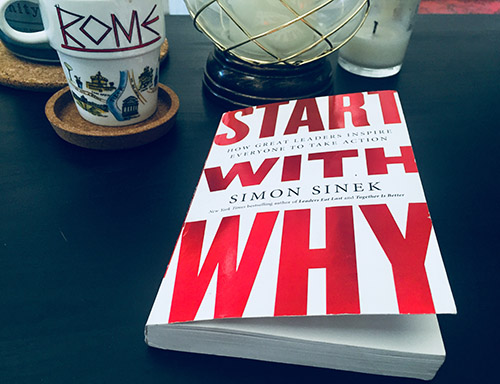The book, Start With Why: How Great Leaders Inspire Everyone to Take Action by Simon Sinek, is one of a few about leadership by The New York Times best-selling author. After a successful TED Talk, “How Great Leaders Inspire Action”, Sinek went on to expound upon the lecture’s main ideas in a book. Published in 2009, the book focuses on the idea of ‘The Golden Circle’, which is Sinek’s quick way of encouraging potential future leaders to “start with why” they do something, then figure out how to do it, and that will ultimately lead to what you do.
Sinek starts the book discussing the difference between manipulation and inspiration, pointing to different industry techniques of manipulating their customers/clients such as price drops, peer pressure, and aspirational messaging. A good takeaway, though, for those in the media industry is Sinek’s observation that companies or organizations that don’t have a good understanding of their customers tend to rely upon manipulations because it’s a sure way to guarantee “a transaction, or any behavior”…but with an expiration date.
For those in the media industry, a take away from this line of thinking in Sinek’s book is that in order to foster loyalty amongst customers/clients, it is necessary to inspire a following, not manipulate one. Therefore, it is also necessary to understand one’s audience and then work to supply them with what they need and want.
It is an overwhelming pro that Sinek writes about how loyalty and trust are earned, not bought or convinced. He emphasizes that a true leader must earn trust by communicating and demonstrating values and beliefs—essentially, talking about one’s why and proving it with what is done. “Why is just a belief, hows are the actions we take to realize that belief, and whats are the results of those actions. When all three are in balance, trust is built and value is perceived,” (Sinek, p.85)
The book is easy to read and has an impactful message that can help anyone capitalize his or her leadership abilities. From the day I finished reading, it has become a regular occurrence to be in a situation—be it professional or personal—and realize that if the communication is effective, it is following the ‘start with why’ principle. 
However, while this “Golden Circle” methodology is straightforward and Sinek’s examples in the book are well thought out, ultimately, this read is slightly repetitive—especially for those familiar with Sinek’s TED Talk. The chapters are simply written to the point of being worthy of a mere skim at times, and the jumps between chapters can sometimes be jarring.
Sinek’s examples of companies, too, seem to be rather conventional—referencing a top company like Apple and hailing it as the most innovative somewhat dates the book. Of course Apple is a successful company, with over 50 percent of all homes in the USA using Apple products…but considering the way it clashes with companies like Samsung in terms of who came up with a new idea first, well, innovative technologically may not be the best description. Effective at marketing? Absolutely.
However, as repetitive as the book may feel, it is good to remember that, “mindful leaders know how to repeat success patterns”…so perhaps the format of the book is in and of itself an example of good leadership.
In the end, the bottom line is that this book can apply to anyone in a leadership position and is not limited to a professional setting. The concepts Sinek conveys can ultimately make anyone a more efficient and authentic communicator that others will want to follow.

